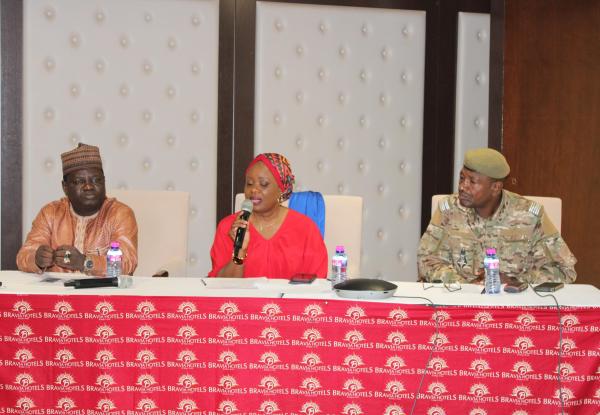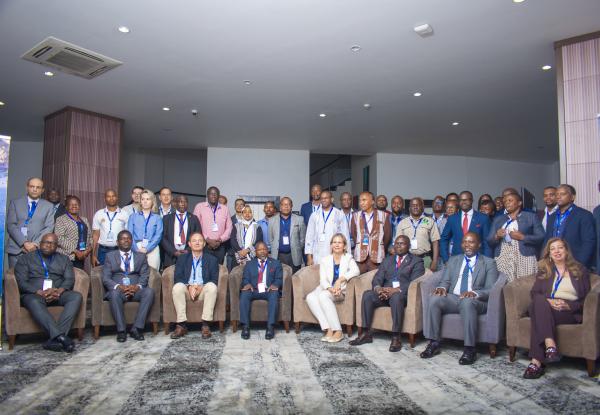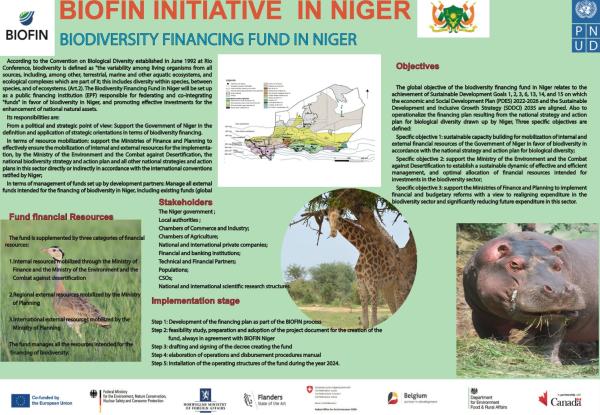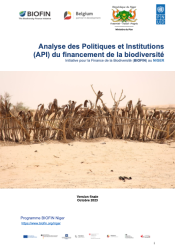Niger
An arid state on the edge of the Sahara Desert, Niger, is a landlocked Sub-Saharan nation, where the economy centers on its biological diversity mainly on subsistence crops and livestock.
There are three protected areas, W National Park, Aïr and Ténéré Natural Reserves, in which are listed as UNESCO World Heritage Sites. The W National Park accommodates the W-Arly-Pendjari Complex, being the largest and most important sequence of terrestrial and aquatic ecosystems in the West African savannah belt. Other important landmarks include the Timia Waterfall and the lush Niger River in the southwest.
From a biodiversity standpoint, Niger is home to over 1400 plant species, around 130 mammal species and over 150 reptiles and amphibians. The avifauna of Niger includes 528 birds with 15 of them are globally threatened. The most threatened antelope species, dama gazelle, has become a national symbol. In the wild, dama gazelles are estimated to be fewer than 300 and classified on the IUCN Red List of Threatened Species as critically endangered.
The Sahara Desert covers about 65% of Niger. Harsh desert conditions hinder the survival of most of these native species. Over the last decades, Niger has witnessed an accelerated level of biodiversity degradation.
About 21 million acres equals to approximately 6% percent of Niger's land area is protected, however poaching and habitat loss are taking a heavy toll on the country's wildlife. Primary threats to endangered species include over-exploitation of resources and anthropogenic factors.
It is estimated that over 70 Protected Areas (PAs) in Niger have lost substantial portions of their biological diversity. Protected areas in Niger are generally hampered by limited funds and resources.
The Policy and Institutional Review (PIR) in Niger highlighted the following results:
- There is a generalized loss of biological diversity in all its components, although in some agroecological zones, a return of wildlife and an increase in biomass have been observed.
- National strategies/policies and visions take very little account of biodiversity protection in their methodological approaches and compositions.
- The environmental situation remains characterized by "weak enforcement of legal and regulatory requirements, resulting in the absence of environmental assessments for artisanal mining, the absence of site rehabilitation plans and the subsequent appearance of orphan sites for artisanal mining and quarrying".
- Despite the strong dependence of the Niger economy on biodiversity, and nature's increasing contribution to GDP, financing biodiversity is not a priority objective for government authorities.
- Increasingly, local authorities, which have been given responsibility for sustainable environmental management, are contributing to the mobilization of biodiversity resources, without being able to fully invest in the implementation of these responsibilities.
- The landscape of biodiversity financing in Niger was analyzed through a presentation of the national and sub-national budgetary process, an assessment of biodiversity revenues, an inventory of more than 28 existing financing instruments, and the identification of subsidies with an impact on biodiversity.
- Five key priority institutions for biodiversity financing were identified, including the Ministry of Economy and Finance and the Ministry of Hydraulics, Sanitation and the Environment.
- These key priority institutions are committed to supporting the implementation of the BIOFIN approach, and to identifying, adopting and operationalizing financing mechanisms that will contribute to significantly improving the mobilization of financial resources for biodiversity and their effective and efficient management.
Niger is a new BIOFIN country and in the preparatory phase.
The PIR was carried out based on key documents such as the NBSAP, the National strategy and action plan for biodiversity information exchange in Niger, the 6th CBD national report, the PDES 2022-2026, the finance laws 2022, 2021, 2020, 2019, 2018, and Settlement Acts from 2000 to 2021, the Statistical yearbook 2016-2020, etc.
Conducted using a participatory and inclusive approach, the API process achieved four main results:
- The first result relates to the analysis of visions and strategies for biodiversity.
- The second result clarifies the context of these sustainable development strategies/policies by describing the evolutionary trends of biodiversity in Niger.
- The third result focuses on the landscape of biodiversity financing in Niger, revealing the national and sub-national budgetary process, biodiversity revenues, existing financing instruments in Niger (over 28 instruments identified and analyzed), and subsidies with an impact on biodiversity.
- The fourth result, derived from the analysis of biodiversity financing institutions in Niger, facilitates our understanding of the institutional dynamics that characterize biodiversity in Niger.
Finally, several general and specific recommendations have been formulated. These underline the need for capacity-building programs for key priority institutions in budgeting, planning, management of biodiversity financing mechanisms, and internal resource mobilization for biodiversity, as well as changes in sectoral agropastoral policies, improved budgeting and planning processes within the public sector, and good environmental/ecological governance.



